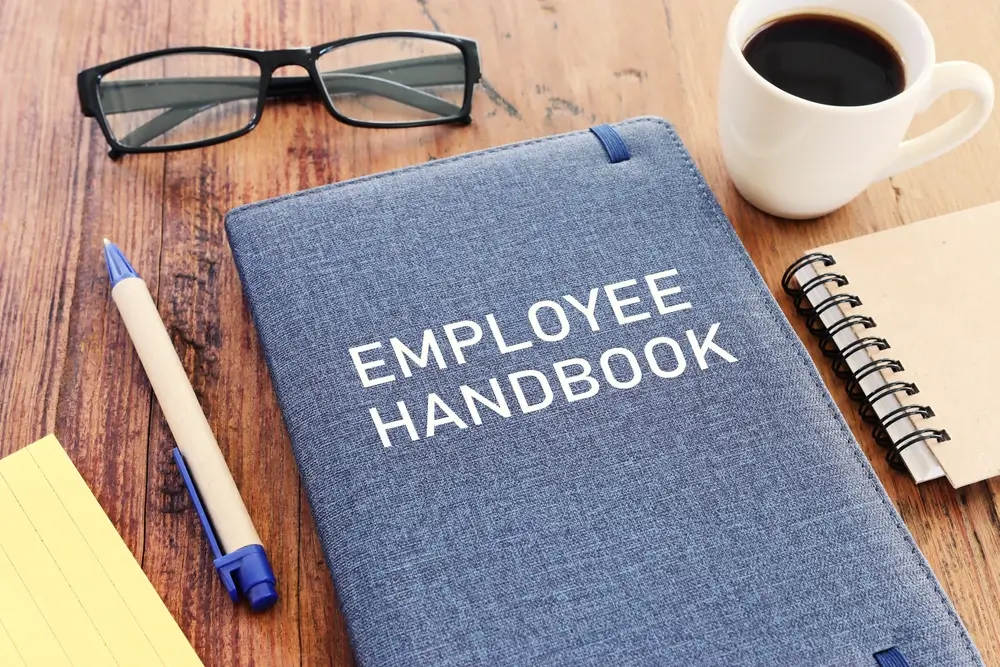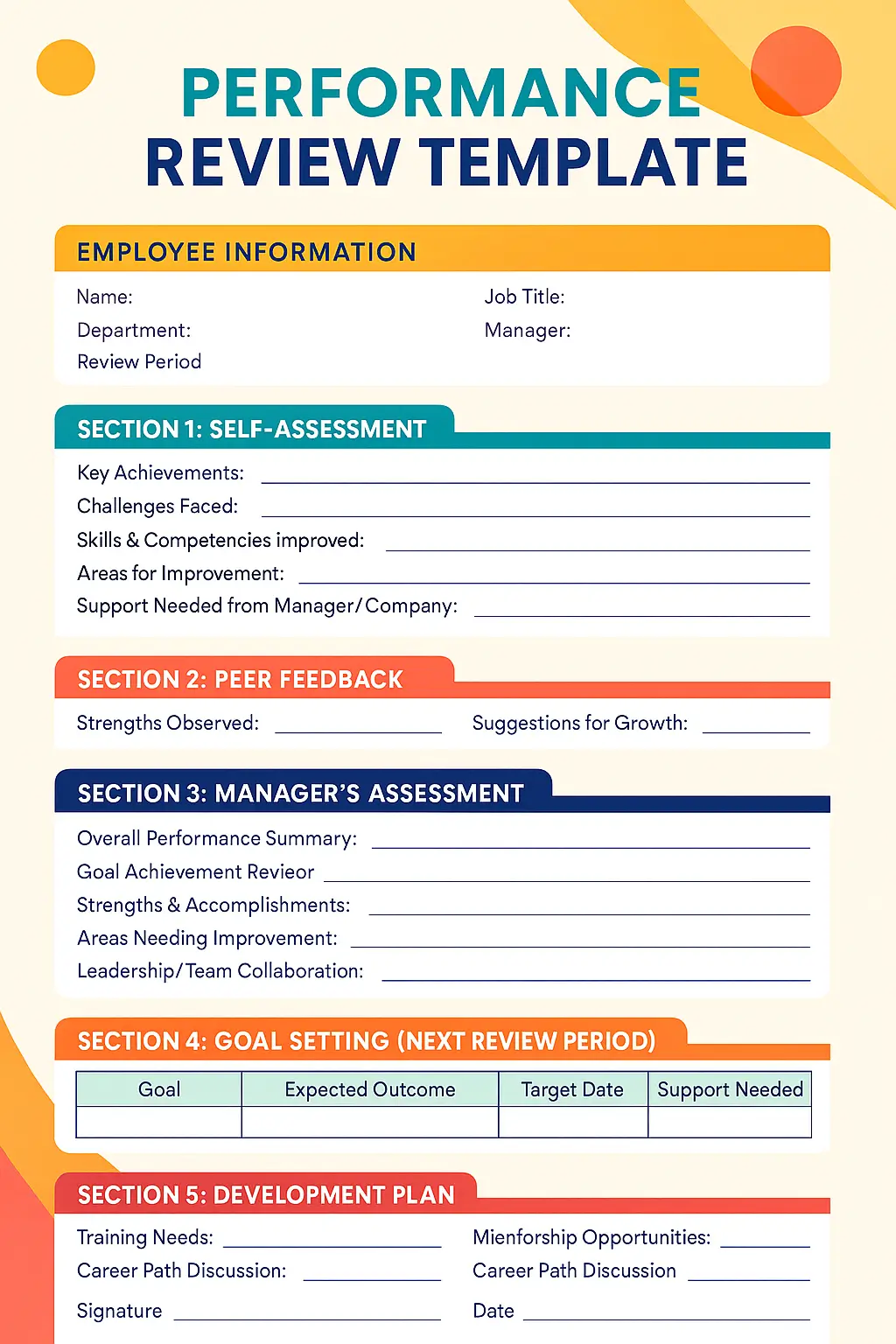14 Best Employee Handbook Examples for Your Business

If you are growing your team you may have noticed small misunderstandings start to creep in. New hires might ask the same questions again and again. Team members might not know the rules about holidays, benefits, or working from home. This leads to confusion and wasted time.
The solution is an employee handbook. A clear staff handbook gives everyone the same information about company policies and procedures. It sets expectations while supporting your company culture and prevents the same questions from being asked repeatedly
In this guide, we have discussed all about an employee manual in detail and also compiled the best employee handbook examples so you can save your time and take inspiration.
What is an Employee Handbook?
An employee handbook, also known as a staff handbook or employee manual, is a document that contains essential information about a company’s mission, values, policies, procedures, and expectations for new and existing employees.
This handbook is used to introduce a new employee to the company and is usually provided to employees on their first day. It helps staff to understand things like how to report absence, to request holidays and other things. It also helps employees to find answers to their business-related questions easily without needing help from the employer.
In the UK, you don’t need an employee handbook legally, but sometimes it covers important legal elements like absence management, health and safety and parental leave. A good handbook reduces confusion and creates a strong company culture.
14 Best Employee Handbook Examples You Should Take Inspiration From
When companies understand what should be included in their handbooks, there is still a need for visual examples to see how everything looks when combined.
Here are some effective employee handbook examples you can use for inspiration:
1. Netflix
Netflix’s employee handbook explains its unique culture clearly. It shows the company’s values in a way that feels real and not like boring corporate words. The 129-page guide helps employees understand how Netflix works and what is important. You can see the company’s personality and learn how to do your best there.
2. Octopus Energy
Octopus Energy’s handbook focuses on culture and values. It explains their exciting, innovative work style for new employees. Sections like ‘our values’, ‘rituals’, and ‘career and compensation’ make it easy to understand. This handbook helps employees feel part of a high-trust, modern company.
3. HubSpot
HubSpot uses a very simple and bold handbook. Instead of many rules, it asks employees to “USE GOOD JUDGMENT” for everything. This approach shows trust and empowers workers to make smart decisions. Even with few rules, it works well because the company is successful and happy employees follow it.
4. University of Oxford
The University of Oxford handbook is short but complete. In just 40 pages, it gives clear and easy-to-follow information. The tone is formal and proper, which suits an academic setting. Employees can quickly find what they need without reading too much.
5. Monsoon Accessorize
Monsoon Accessorize uses a friendly FAQ style in their handbook. It is 75 pages but feels easy to read because of the informal tone. Employees can quickly get answers and feel supported. It is helpful for a high-street retail environment where clarity matters.
6. Bank of England
The Bank of England handbook is well-organized with clear sections. At 53 pages, it is easy to find information fast. The structure works well for regulated work environments. Employees can follow rules without confusion.
7. Google
Google’s employee handbook is clear and engaging. It explains the company’s culture of creativity and collaboration. Its policies focus on transparency, trust and learning. Flexible work and “20% time” show how employees are encouraged to explore ideas. The handbook sets expectations while inspiring innovation.
8. Trello
Trello’s handbook is simple and interactive. It helps new hires learn the company in small, easy steps. The format is visually appealing and easy to navigate. Employees feel engaged from day one.
9. Zappos
Zappos provides a long, detailed handbook. It gives personal insights and lots of information about working there. New employees can understand their role and the company clearly. It feels like a complete guidebook for new hires.
10. GitLab
GitLab’s handbook is huge with 13,804 pages, but it is very detailed. It explains everything about how the company works. Employees and the public can suggest improvements. The handbook shows the company is open, transparent, and collaborative.
11. Nordstrom
Nordstrom keeps things simple with one rule: “Use good judgment in all situations.” This shows employees they can think for themselves. Even with one rule, it communicates the company’s approach clearly. Simple ideas can be very effective.
12. Valve
Valve’s handbook is like a storybook. It guides employees through the first six months and explains what to do if mistakes happen. It also shares the company history in a fun way. Employees can learn and enjoy reading at the same time.
13. Facebook (Meta)
Facebook’s handbook looks like a high-quality book. It is visually appealing with text and images that explain everything clearly. Employees can easily understand policies and culture. The design makes it enjoyable to read.
14. Pronto Marketing
Pronto Marketing’s handbook is easy-to-read and very visual. It has a clickable table of contents to find information quickly. Employees can refer back to it anytime. The handbook balances completeness without being overwhelming.
You can use these as inspiration to design your own employee handbook template that aligns with your culture.
How to Write an Employee Handbook
Writing a handbook can feel big, but breaking it into steps makes it simple. Here are some basic tips to write an employee handbook.
Decide the Purpose: When you want to write a staff handbook, think about why you need the handbook. Is it for legal compliance, or just for making onboarding easier?
Gather Policies: Collect all your company policies and procedures. This includes:
- Working hours and attendance rules
- Pay schedule and benefits
- Health and safety procedures
- IT and data security rules
Use Clear Language: Avoid legal jargon and keep sentences short and to the point. Write as if you are speaking to a new employee on their first day. State your policies and other things as straightforwardly as possible.
Keep Sections Logical: Once you know what you want to include, group topics under clear headings in a logical order so employees can quickly find what they need.
Make it Easy to Access: When your handbook is ready, make a digital copy. This way, employees always have access to the staff handbook from any place and at any time and they always have the latest version.
What Needs to Go in an Employee Handbook?
An employee handbook should be different for each company depending on its business needs. Handbooks can differ in length and content but here are some common elements that most of them include:
- Introduction and Welcome Note from the Leader(s)
- Company Background
- Information on Company Culture and Business Approach
- Hours and Conditions of Work
- Overtime and Time Off in Lieu (TOIL)
- Pay Reviews
- How to Request Holidays
- Reporting Absences
- Employee Benefits
- Training and Development
- Performance Reviews and Appraisal Process
- Disciplinary and Grievance Procedures
- Drug and Alcohol Policy
- Equal Opportunities Policy
- Flexible Working and Family-Friendly Policies
- Bullying and Harassment Policy
- Compassionate Leave
- Maternity, Paternity, Adoption, and Shared Parental Leave
- Data Protection Policy
- Whistle-Blowing Policy
- Dress Code Expectations
- Social Media, Email, Internet, and Mobile Phone Usage
- Equality and Diversity
- Health and Safety Guidelines
- Acknowledgement Section (employee confirmation of understanding)
What are the benefits of an employee handbook?
Having a well-crafted employee handbook provides several benefits for both employers and employees. For employers, it helps establish clear expectations and guidelines for their workforce, reducing the risk of misunderstandings or legal disputes. The handbook can also serve as a reference for employees, providing them with a source of information on various policies and procedures. This can help employees feel more confident and secure in their roles, leading to increased job satisfaction and productivity. An employee handbook can aid the company in addressing important topics such as:
- Communication: An employee handbook is an excellent way to communicate the company’s policies and procedures. It provides employees with the information they need to understand their rights and responsibilities within the organization. It also helps to ensure that employees are aware of the company’s expectations, policies, and rules.
- Consistency: An employee handbook can help to ensure consistency in how the organisation is run. By outlining the policies and procedures, the handbook helps to ensure that everyone is treated fairly and equitably. It also helps to ensure that the company complies with the law.
- Reference: An employee handbook serves as a reference point for employees. It can be a useful tool for new employees who are unfamiliar with the company’s policies and procedures. Additionally, it can serve as a reference point for employees who need to review a particular policy or procedure.
- Legal Protection: An employee handbook can help to protect the company from legal action. By outlining the company’s policies and procedures, the handbook can help to ensure that employees are aware of their rights and responsibilities. Additionally, it can help to protect the company from liability in case of a legal dispute.
Conclusion
An employee handbook is not just a document. It is a guide that helps employees succeed and supports a healthy workplace. It prevents confusion and builds a strong company culture. Creating one does not have to be hard. Start with a simple employee handbook template and update it as your company grows.
If you want to make this process even easier, consider using a tool like Zelt HR system. It allows you to store your handbook digitally, share updates instantly, and collect employee acknowledgements in one place. This ensures your team always has the right information at the right time.
See how Zelt brings payroll, HR, and people management together in one connected platform.
Frequently Asked Questions
Do employers need to have an employee handbook?
While there is no legal requirement for employers to have an employee handbook, it is strongly recommended. An employee handbook provides a clear and consistent set of guidelines for employees, reducing the risk of misunderstandings and legal disputes.
Can an employee handbook be legally binding?
Yes, an employee handbook can be legally binding if it includes specific language stating that it is a contractual agreement. However, employers should consult with legal counsel to ensure that any contractual language is enforceable.
How often should an employee handbook be updated?
An employee handbook should be updated whenever there are changes to the company’s policies and procedures. This may include changes to laws and regulations, as well as changes in the company’s structure or culture. Employers should review and update the handbook on an annual basis to ensure that it remains current.


